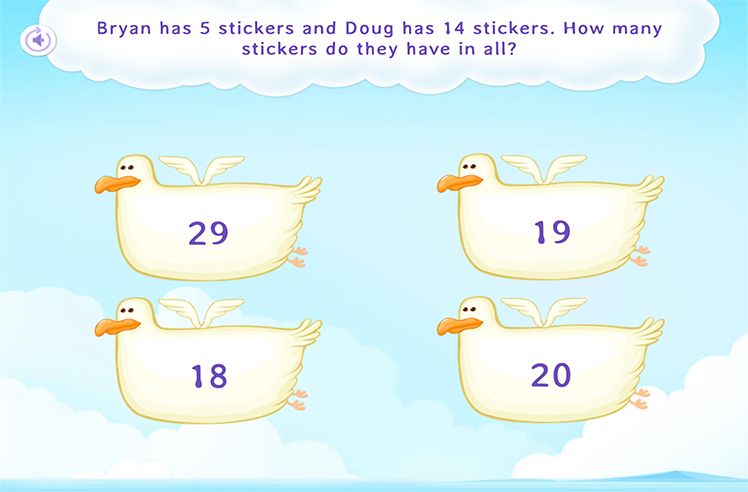What Are Related Facts
Related facts in Math are facts that are related to each other in some way. We can easily find related facts using the given facts.
Since addition and subtraction are inverse operations, we can form their related facts. Let’s go through a related fact example:
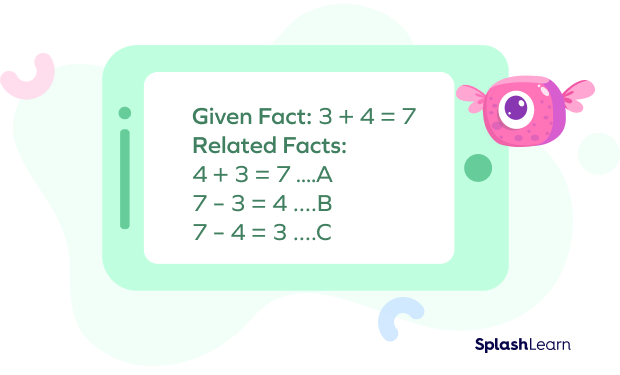
So, A, B, and C are related facts of the given fact, $3 + 4 = 7$.
Notice that the numbers involved in all three related facts are the same as the numbers involved in the given fact. Only the position and operation changes.
Since multiplication and division are also inverse operations, we can form related facts for them as well.
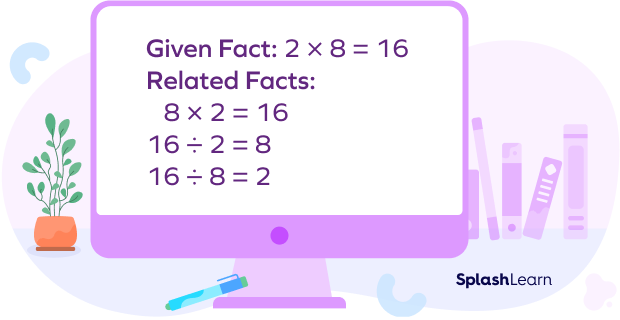
Recommended Games
Fact Families
Fact families are sets of addition and subtraction facts or multiplication and division facts that involve the same numbers. In other words, it is a collection of related facts. Fact families are of two types:
- Addition and Subtraction
- Multiplication and Division
Recommended Worksheets
Addition and Subtraction Fact Family
Addition and subtraction are inverse operations. If we first add a number to a given number and then subtract the same number from the result, we get the original number back. For example, consider 10 as the given number, we add and subtract 2.
$10 + 2 = 12$
$12 – 2 = 10$ (original number)
This means that these two operations cancel each other’s effect on another number or expression.
Let’s have a look at some fact families of addition and subtraction.
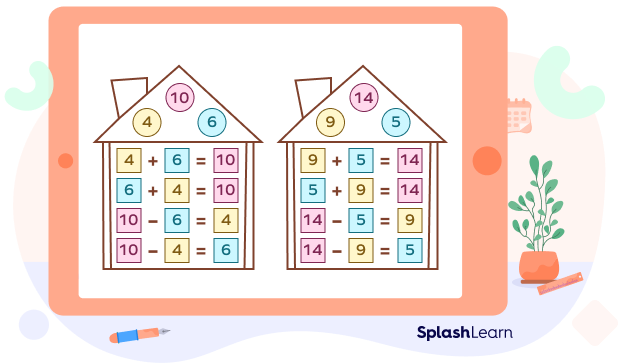
We can assume that fact families are like parts of a whole, where the largest number is the whole, and the other two numbers are the two parts that make up the whole. In the first example above, 10 is the whole and the numbers 4 and 6 are the parts.
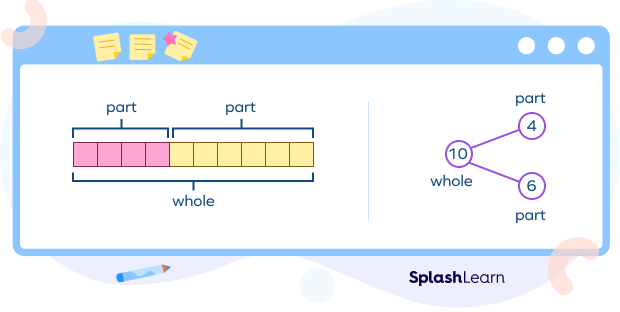
Multiplication and Division Fact Families
We know that multiplication and division are also inverse operations, so we can form fact families for these two operations using the related facts. Let’s have a look at some fact families of multiplication and division.
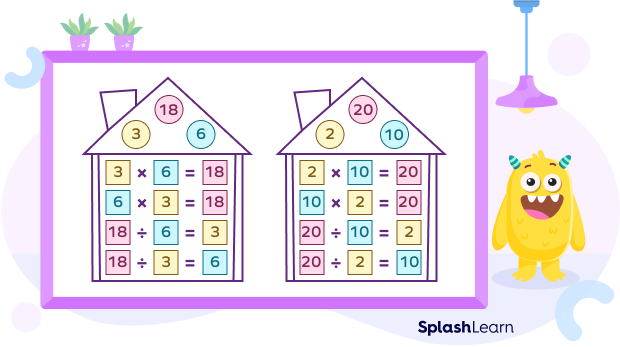
Importance of Related Facts
Related facts are used so that a student can understand the relationships between the operations of addition and subtraction, and multiplication and division. It helps the students to remember that addition and subtraction are inverse operations and multiplication and division are inverse operations.
For example, if we know any one fact from a fact family, we can easily find the other related facts.
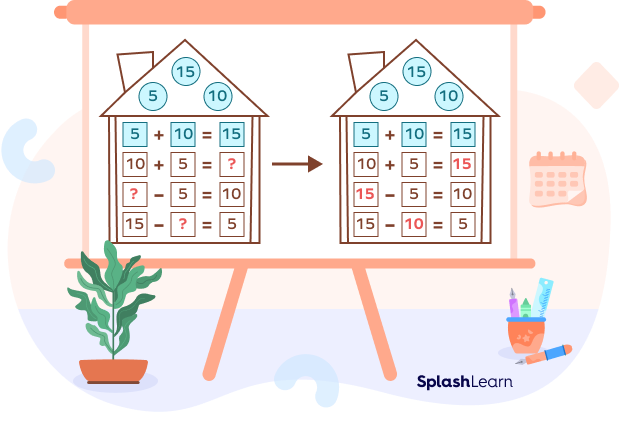
Solved Examples
Example 1: Identify which family the given numbers belong to. Also write all four related facts.
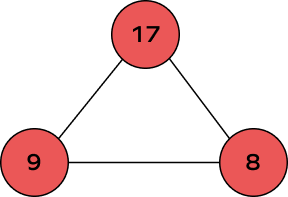
Solution:
Let’s try adding the two smaller numbers, $9 + 8 = 17$ (third number)
So, these numbers belong to the addition and subtraction fact family.
The other related facts are:
$8 + 9 = 17$
$17 - 8 = 9$
$17 - 9 = 8$
Example 2: Identify which fact family the given numbers belong to. Also write all four related facts.
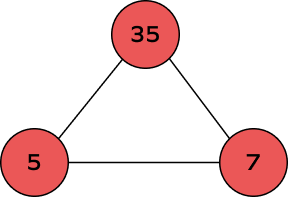
Solution:
Let’s try adding the two smaller numbers, $5 + 7 = 12 ≠ 35$.
Now let’s multiply these numbers.
$5 \times 7 = 35$ (third number)
So, these numbers belong to the multiplication and division fact family.
The other related facts are:
$7 \times 5 = 35$
$35 \div 5 = 7$
$35 \div 7 = 5$
Example 3: Use the given fact to complete the fact family.

Solution: It is given that $10 – 3 = 7$.
Using this fact, we can easily determine the other related facts.
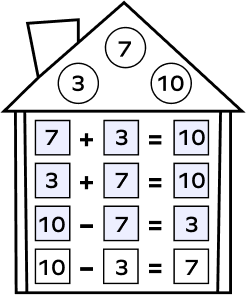
Example 4: Make a fact family of 2, 8 and 16.

Solution: 2, 8 and 16 belong to the multiplication and division fact family.
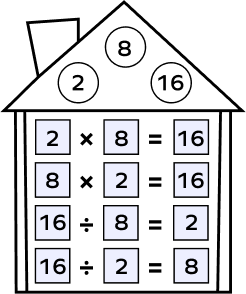
Example 5: One of the facts is given: $5 ☐ 3 = 15$. Identify the operation and write all other related facts.
Solution: $5 \times 3 = 15$.
The other related facts are:
$3 \times 5 = 15$
$15 \div 3 = 5$
#$15 \div 5 = 3$
Practice Problems
Related Facts - Definition With Examples
Use $6 \times 8 = 48$ to complete the fact: $48 \div$ __ $= 6$
It is given that $6 \times 8 = 48$, so the related division fact would be $48 \div 8 = 6$.
Which of the following does not belong to the fact family of $5 \times 2 = 10$?
Facts belonging to the same fact family involves all the same numbers.
Identify the third number of the addition and subtraction fact family given that the whole is 24 and one part is 8.
We know that, here, the whole 24 and 8 is one of the two parts. To find the second part, we subtract the given part from the whole $(24 – 8 = 16)$. So, the third number of the fact family is 16.
Frequently Asked Questions
What is a fact family?
Fact families are sets of addition and subtraction facts or multiplication and division facts that involve the same numbers. In other words, it is a collection of related facts.
How does multiplication facts help you divide numbers?
Multiplication and division are inverse operations. In multiplication, we combine equal groups to find the total number, whereas in division, we distribute the given number into equal groups. So, knowing a multiplication fact, we can easily find its related division fact.
Can we have a related fact of a given division fact from subtraction?
No, the related facts involve the same numbers and either the same operation or an inverse operation. So, related facts of a division fact will be either of multiplication or division involving the same set of 3 numbers.
























